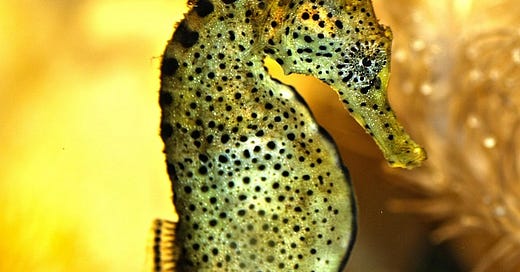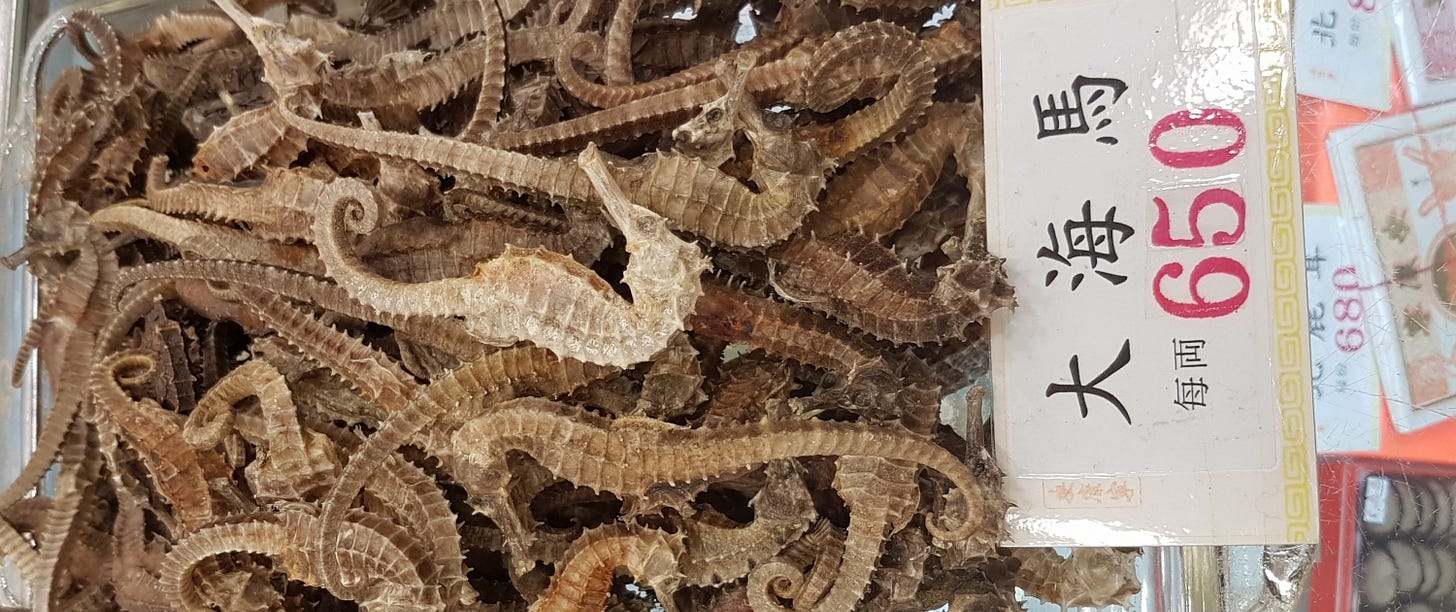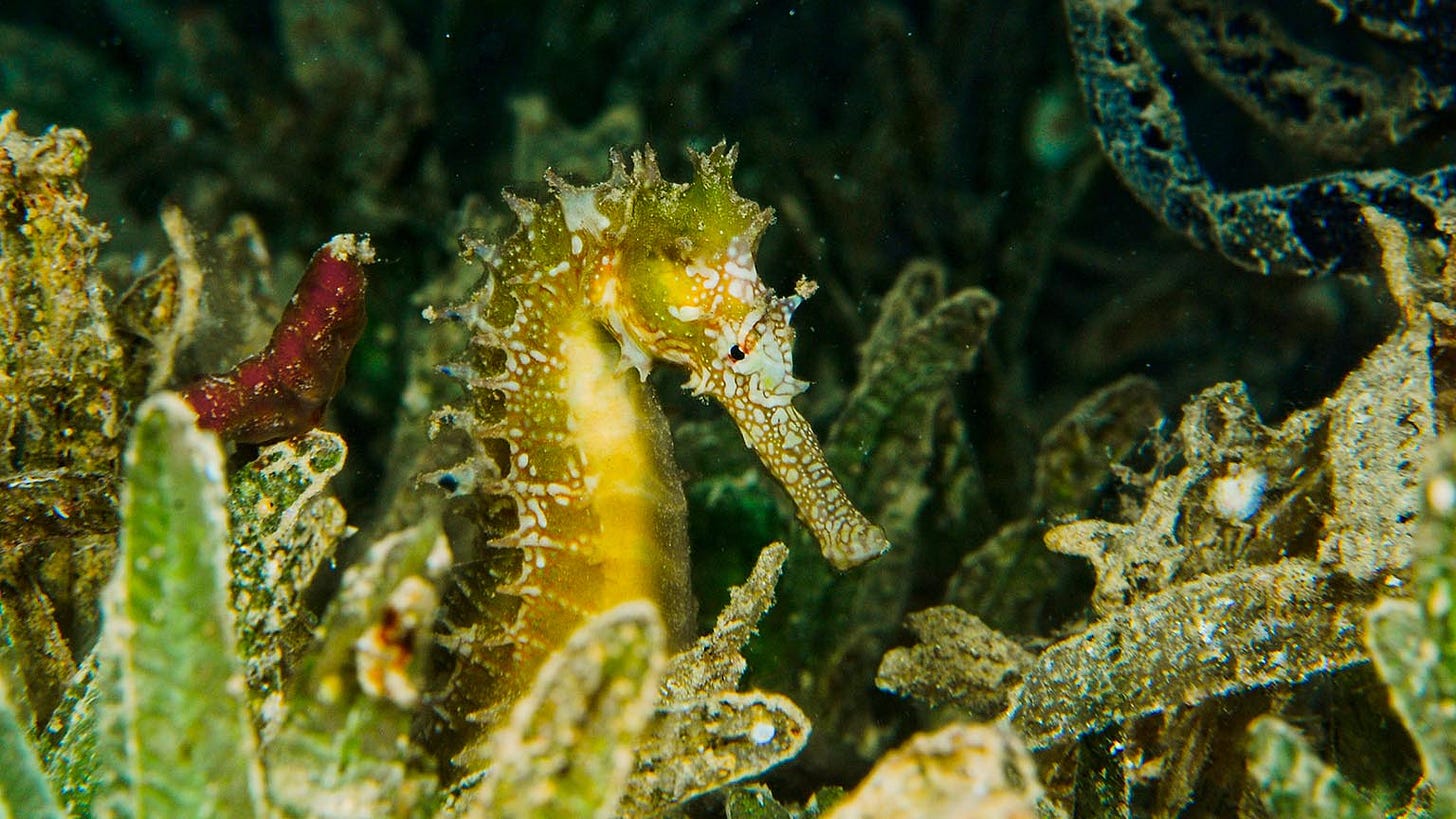The growing illegal trade of seahorses
A global ban on seahorse trade wouldn't just save seahorses from extinction - it would by proxy protect entire marine ecosystems. But for now they are killed in the millions, dried up and smuggled.
A few days ago a study by Conservation Biology made the news. It had looked into wildlife seizures from 2010 to 2021 and there discovered that seahorses in the millions (both alive and dead) were hidden in luggage and transported across sixty-two countries. Most of the dead seahorses become traditional medicine in Asia.
These minuscule creatures (mind you, the big-belly seahorse can be thirty-five centimeters in length) play their important ecosystem parts as predator and prey. And the increased trafficking risks destroying them. Whether it’s seahorses or any other creatures - we risk driving species to extinction at our own peril. When a species vanishes, it inevitably shocks the system.
When will we learn that shocking the natural world we all depend on - and that on a continuous basis - might possibly not be the smartest thing to do?

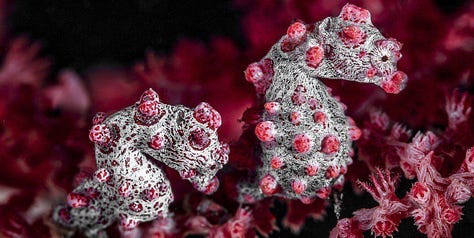

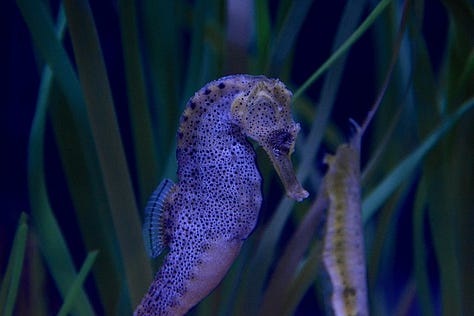
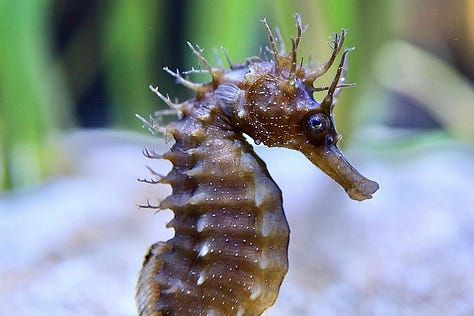
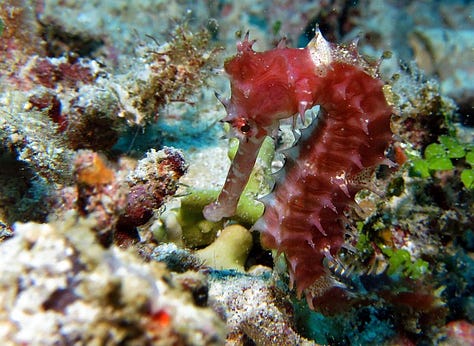
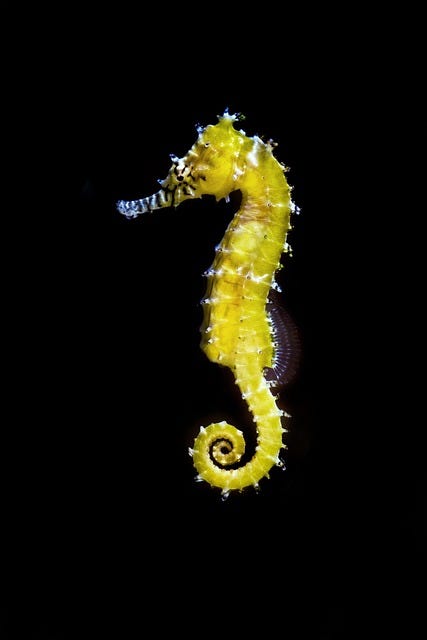
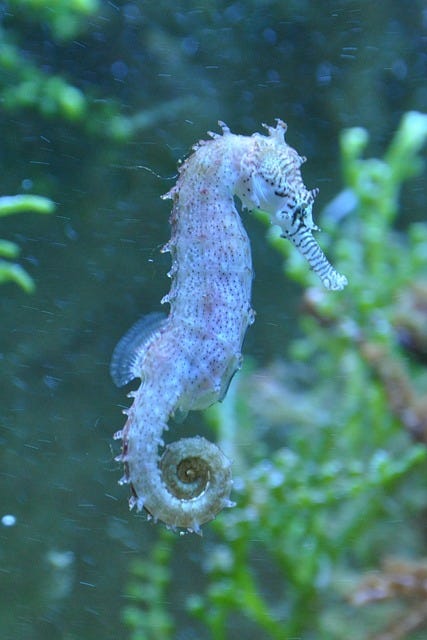
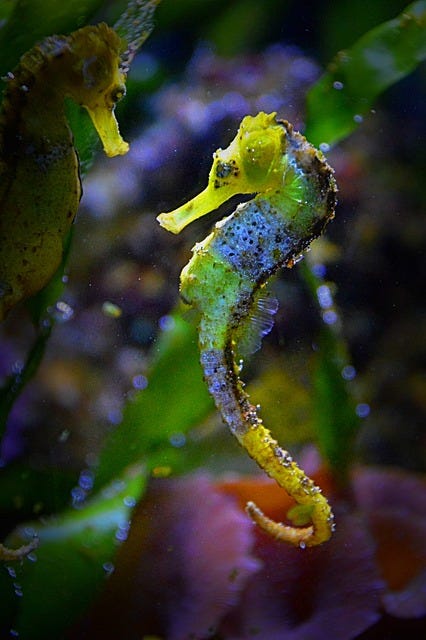
Seahorses: iconically fantastical
The male carries the young through the whole pregnancy - females inject their eggs into the male, where they meet with the sperm and where they then grow until the male gives birth to up to 2’000 little ones (watch a male give birth). Most of those thousands are prey and won’t make it to adulthood. But a very, very few do - and so the species thrives (well, if it weren’t for us).
There are: forty-six different seahorse species (some places suggest that there are forty-seven by now); a flabbergasting spectrum of diversity; those iconic snouts that gave them their name hippocampus (from the ancient Greek hippos, meaning horse, and kampos, meaning sea monster or sea animal); the way they move, the way they use their tails to cling to objects, corals, grasses - it makes the mind soar, doesn’t it?
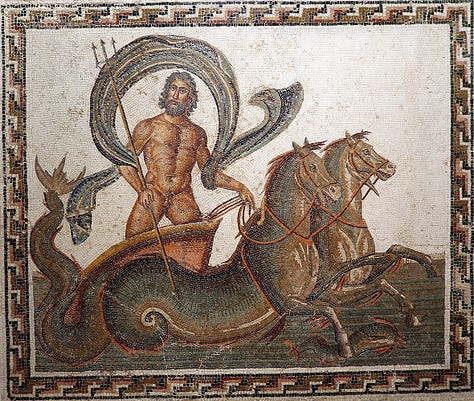
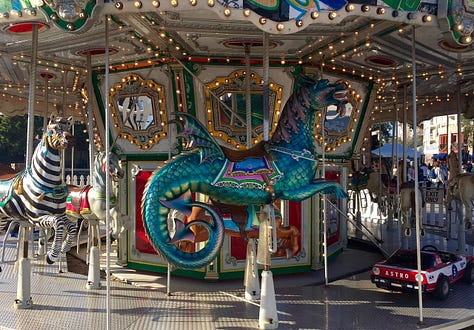
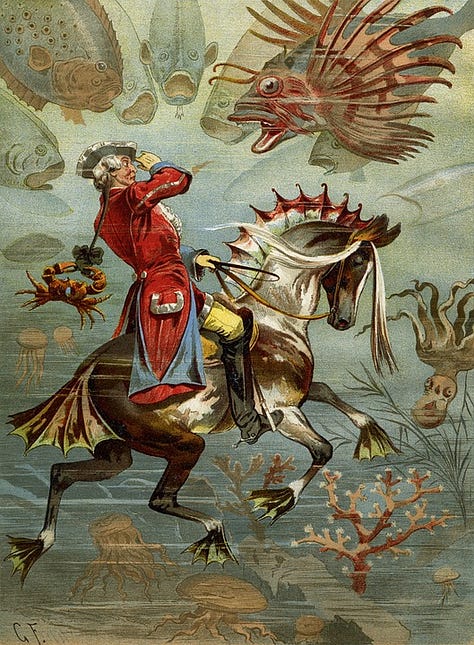
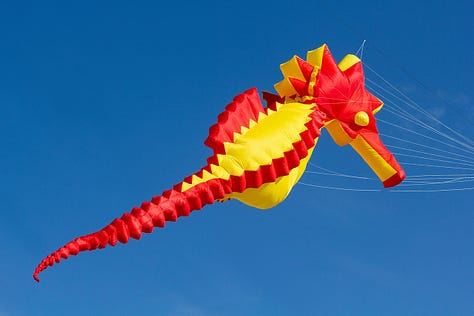

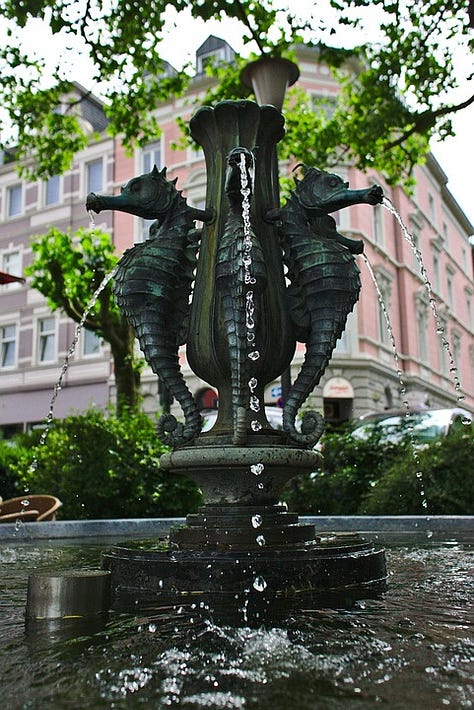
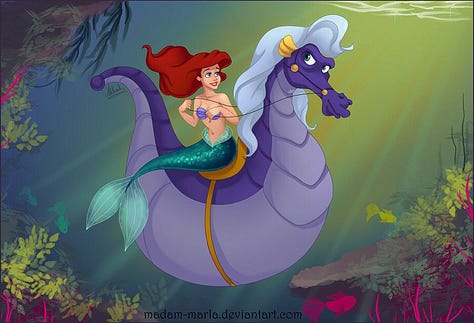

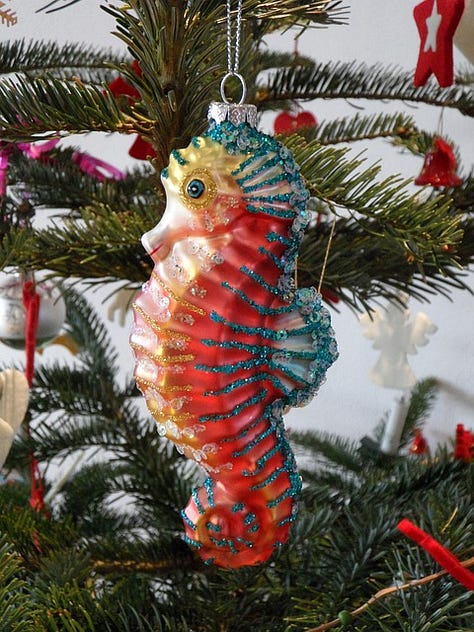
They have inspired our imagination for millennia and that, in itself, should be enough for humanity to stop the increasing trafficking madness.
The seahorse trafficking mania
In the ten years researched for the aforementioned study, a total of five million seahorses were seized in three hundred seizures … and as with every illegal trade, you know that what’s been seized is only the very tip of the iceberg. It is an entirely reasonable assumption that tens of millions of seahorses are illegally traded every year. Project Seahorse estimates that 70 million are caught every year, Save Our Seahorses goes further with an estimate of as much as 150 million! (Save Our Seahorses goes further still, estimating on their website that, unless actions are taken, seahorses will go extinct within less than 1’700 days - less than five years).
The human endeavors of the illegal wildlife trade continue to rampage through the globe’s fragile ecosystems, decimating, disrupting and sometimes destroying species and habitats. According to the above-mentioned study, the illegal trade of wildlife encompasses over 6’000 species and has an estimated value of US$ 23 billion annually. The illegal seahorse trade, with seahorses sourced from Asia, Africa and Latin America isn’t just happening, it is on the rise.
Like Save Our Seahorses, Project Seahorse also highlights that extinction is a clear and present risk: “Seahorses, fishes known for their quirky features and male pregnancy, serve as powerful ambassadors for our oceans and for marine life that is vulnerable to overexploitation. Of 46 known species, at least 16 face the risk of extinction.”
There actually is a legal seahorse trade - but exporting seahorses legally can only be done with permits (that they were legally caught) and certifications (that no wild populations were harmed).
Medicine
Traditional Chinese medicine (TCM) is well known many things, among them its use of animal products that, for the western world, seem more than a little ‘out there’. There’s tiger bones and pangolin scales, shark fins and bear bile. Horns are big (rhino, buffalo, antelope), antlers and, of course, genitalia. I’ve read that TCM uses nearly forty different species as ingredients for treatments for and against just about everything. If you dare to go down that rabbit hole of products and supposed treatments, go here.
It’s easy to get lost in everything you’ll read there from tiger penis soup to pangolin blood and fetuses (learn all about the pangolin trafficking madness), but let me stick to seahorses. These little marine marvels - if TCM is to be believed - can cure everything from skin infections to asthma and impotence. Essentially, grind the seahorse into powder, mix it with herbs and drink it as a tea, et voilà: Viagra!
Is there any proof to any of that? The answer is a big fat NOPE.
High time to end TCM-fueled ecocide
I’m actually in favor of traditional medicines. There’s no doubt on my mind that indigenous peoples had and continue to have amazing nature knowledge,. They accumulated, curated, tested and orally passed on that knowledge for hundreds and thousands of years.
But I’m also a forever Doubting Thomas. I’ll always question things and I’ll always ask for proof. In the case of using all of these animal products, there’s barely any scientific evidence that any of those so-called treatments actually deliver. But, as is rightly argued, there can be the placebo effect. If people pay dear money for this and that rare animal product, that in itself can be conducive to fervently want to believe in said product’s efficacy.
However, even if these treatments actually did work, they should be outlawed. The global biodiversity crisis, fueled by us, rages like a wildfire through species after species, decimating, endangering, driving to extinction. TCM is a leading cause of poaching, illegal trafficking, animal cruelty, slaughter. While laws have sprung up, the illegal trade of animals is worth many billions annually - and so, where there’s a buck to be made, some people will do everything to make that buck.
Outlawing seahorse trade anywhere in the world would make a big difference. Another threat for seahorses and most other marine animals is the dreaded bycatch. Lots of boats snatch up everything they can. This way millions more seahorses perish and, in this same way, marine ecosystems are continuously attacked, harmed and downgraded to the point of ecosystem collapse.
While 150 countries are signatories of CITES (Convention on International Trade in Endangered Species), this is - see above numbers - of little help. What’s needed is a global ban. After all these years of banning international ivory trade, elephant poaching is greatly reduced, the ivory business collapsed. It can happen. I can work. And a global seahorse ban wouldn’t just protect this iconic animal: If we protect the seahorse around the world, then by proxy we will also be protecting huge chunks of marine ecosystems.
That’s it from me for now.
Cheers,
If you enjoy the Rewilder Weekly …
… consider supporting my work. Your subscription will help generate the funds needed to realize a unique rewilding book I’m working on. And, of course, that subscription also ensures that the Rewilder Weekly will always keep going for those who cannot afford to pay. A thousand thanks!


